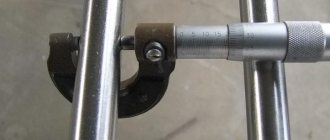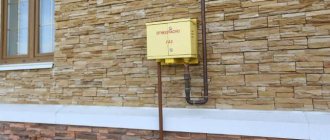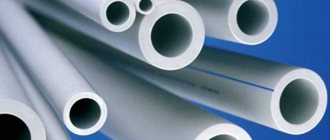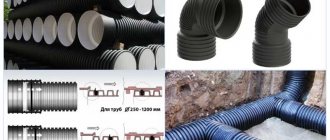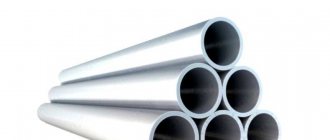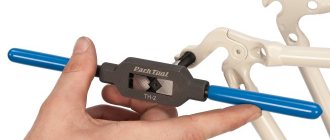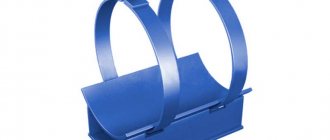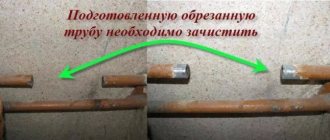Diameters of electric-welded round pipes GOST 10704
| Pipe parameters (outer diameter) | Steel | Wall thickness, mm | |||
| Ø 16 | Ø 18 | Ø 19 | Ø 20 | st3 st20 09G2S 08ps | from 1 to 3 mm |
| Ø 25 | Ø 28 | Ø 30 | Ø 32 | st3 st20 09G2S 08ps | from 1 to 3 mm |
| Ø 35 | Ø 38 | Ø 40 | Ø 42 | st3 st20 09G2S 08ps | from 1 to 3 mm |
| Ø 48 | Ø 51 | Ø 57 | Ø 60 | st3 st20 09G2S 08ps | from 1 to 3 mm |
| Ø 76 | Ø 89 | Ø 102 | Ø 108 | st3 st20 09G2S | from 2 to 10 mm |
| Ø 114 | Ø 127 | Ø 133 | Ø 159 | st3 st20 09G2S | from 3 to 10 mm |
| Ø 219 | Ø 273 | Ø 325 | Ø 377 | st3 st20 09G2S | from 3 to 12 mm |
| Ø 426 | Ø 530 | Ø 630 | Ø 720 | 17G1S st3 st20 09G2S | from 4 to 50 mm |
| Ø 820 | Ø 920 | Ø 1020 | Ø 1220 | 17G1S st3 st20 09G2S | from 4 to 50 mm |
| Ø 1320 | Ø 1420 | Ø 1520 | Ø 1620 | 17G1S st3 st20 09G2S | from 4 to 50 mm |
| Ø 1720 | Ø 1820 | Ø 1920 | Ø 2020 | 17G1S st3 st20 09G2S | from 4 to 50 mm |
| Ø 2120 | Ø 2220 | Ø 2520 | Ø 2620 | 17G1S st3 st20 09G2S | from 4 to 50 mm |
| Ø 2720 | Ø 2820 | 17G1S st3 st20 09G2S | from 4 to 50 mm | ||
Diameter of water and gas pipe VGP GOST 3262-75
| Nominal diameter, internal diameter mm | Outer diameter, mm | Steel | Wall thickness, mm |
| Ø 6 du | Ø 10.2 | st20, st10, st1-3 sp/ps | 1,8; 2; 2,5 |
| Ø 8 du | Ø 13.5 | st20, st10, st1-3 sp/ps | 2; 2.2; 2,8 |
| Ø 10 du | Ø 17.0 | st20, st10, st1-3 sp/ps | 2; 2.2; 2,8 |
| Ø 15 du | Ø 21.3 | st20, st10, st1-3 sp/ps | 2,35; 2,5; 2,8; 3,2 |
| Ø 20 du | Ø 26.8 | st20, st10, st1-3 sp/ps | 2,35; 2,5; 2,8; 3,2 |
| Ø 25 du | Ø 33.5 | st20, st10, st1-3 sp/ps | 2,8; 3,2; 4 |
| Ø 32 du | Ø 42.3 | st20, st10, st1-3 sp/ps | 2,8; 3,2; 4 |
| Ø 40 du | Ø 48.0 | st20, st10, st1-3 sp/ps | 3; 3,5; 4 |
| Ø 50 du | Ø 60.0 | st20, st10, st1-3 sp/ps | 3; 3,5; 4,5 |
| Ø 65 du | Ø 75.5 | st20, st10, st1-3 sp/ps | 3,2; 4; 4,5 |
| Ø 80 du | Ø 88.5 | st20, st10, st1-3 sp/ps | 3,5; 4; 4,5 |
| Ø 90 du | Ø 101.3 | st20, st10, st1-3 sp/ps | 3,5; 4; 4,5 |
| Ø 100 du | Ø 114.0 | st20, st10, st1-3 sp/ps | 4; 4,5; 5 |
| Ø 125 du | Ø 140.0 | st20, st10, st1-3 sp/ps | 4; 4,5; 5,5 |
| Ø 150 du | Ø 165.0 | st20, st10, st1-3 sp/ps | 4; 4,5; 5,5 |
Inches and millimeters
The ratio of sizes in inches and millimeters in the marking of water fittings does not follow a clear pattern. Alas, you cannot simply multiply the number of inches by 25.4: the result will be far from standard DU values.
But you can remember the table of their correspondence:
| DN (mm) | DN (inches) |
| 15 | 1/2 |
| 20 | 3/4 |
| 25 | 1 |
| 32 | 1 1/4 |
| 40 | 1 1/2 |
| 50 | 2 |
The size of this faucet is in inches.
Diameters of seamless pipes GOST 8732-78 and GOST 8734-75
| Pipe parameters (outer diameter) | Steel | Wall thickness, mm | |||||||
| hot-deformed pipes | |||||||||
| Ø 20 | Ø25 | Ø28 | Ø30 | Ø32 | Ø35 | Ø38 | Ø40 | st10, st20, 09g2s | from 2.5-8 |
| Ø 42 | Ø 45 | Ø 50 | Ø 51 | Ø 54 | Ø 57 | Ø 73 | Ø 76 | st10, st20, 09g2s | from 2.5-8 |
| Ø 89 | Ø 102 | Ø 108 | Ø 114 | Ø 121 | Ø 127 | Ø 133 | Ø 140 | st10, st20, 09g2s | from 4-12 |
| Ø 146 | Ø 152 | Ø 159 | Ø 168 | Ø 180 | Ø 194 | Ø 203 | Ø 219 | st10, st20, 09g2s | from 4-15 |
| Ø 245 | Ø 273 | Ø 299 | Ø 325 | Ø 351 | Ø 377 | Ø 402 | Ø 406 | st10, st20, 09g2s | from 4-25 |
| Ø 426 | Ø 450 | Ø 465 | Ø 480 | Ø 500 | Ø 530 | Ø 550 | st10, st20, 09g2s | from 4-25 | |
| cold-deformed pipes (outer diameter) | |||||||||
| Ø 6 | Ø 7 | Ø 8 | Ø 9 | Ø 10 | Ø 11 | Ø 12 | Ø 13 | st10, st20, 09g2s | from 1-2 |
| Ø 14 | Ø 15 | Ø 16 | Ø 17 | Ø 18 | Ø 19 | Ø 20 | Ø 21 | st10, st20, 09g2s | from 1.6-3.5 |
| Ø 22 | Ø 23 | Ø 24 | Ø 25 | Ø 26 | Ø 27 | Ø 28 | Ø 29 | st10, st20, 09g2s | from 1.8-4.5 |
| Ø 30 | Ø 32 | Ø 34 | Ø 35 | Ø 36 | Ø 38 | Ø 40 | Ø 42 | st10, st20, 09g2s | from 2.5-7 |
| Ø 45 | Ø 48 | Ø 50 | Ø 51 | Ø 53 | Ø 54 | Ø 56 | Ø 57 | st10, st20, 09g2s | from 4-9.5 |
| Ø 60 | Ø 63 | Ø 65 | Ø 68 | Ø 70 | Ø 73 | Ø 75 | Ø 76 | st10, st20, 09g2s | from 5-12 |
| Ø 80 | Ø 83 | Ø 85 | Ø 89 | Ø 90 | Ø 95 | Ø 100 | Ø 102 | st10, st20, 09g2s | from 7-18 |
| Ø 108 | Ø 110 | Ø 120 | Ø 130 | Ø 140 | Ø 150 | Ø 160 | Ø 170 | st10, st20, 09g2s | from 9-24 |
| Ø 180 | Ø 190 | Ø 200 | Ø 210 | Ø 220 | Ø 240 | Ø 250 | st10, st20, 09g2s | from 18-24 | |
Construction, agriculture, food and chemical industries, household and civil needs - this is not a complete list of areas in which steel pipes are used. Steel pipes can not only have a round shape, they can have a square, oval or rectangular cross-section. Despite this, these products have two common characteristics: geometric and technical.
Geometric characteristics are expressed by the following indicators:
- pipe length;
- the thickness of their walls;
- diameters internal/external.
The characteristics, dimensions of pipes, requirements for their production and operation are established by special standards. GOST standards are developed and adopted taking into account the materials used in the manufacture of rolled products, as well as the technology of its production.
In Russia, pipe diameters are measured and indicated in millimeters, but in the tables you can see the designation of pipe diameters in inches: 1 inch = 25.4 mm. The inch diameter designation is usually used either on imported products or to indicate the size on HSV pipes.
Numerical value of steel pipe diameters
A huge range of steel pipes for various purposes, designs, and types is presented in the form of tables, where the main parameters are:
- nominal diameter (or nominal diameter);
- outer diameter of the pipe;
- wall thickness.
Sometimes the weight of the product is entered into the table of diameters of steel pipes depending on its size, as well as the parameters of the nominal diameter.
Table values of steel pipe diameters
Tables are convenient to use when determining the exact dimensions of products when connecting them. For example, steel pipes are most often designated in inches - this dimension is accepted in many parts of the world. While polymer products are usually calculated in millimeters, which creates some difficulties when joining metal-plastic, cast iron, copper pipes with steel pipes in the water supply system. Diameter correspondence tables help determine the required dimensions of the joining elements and connect them correctly.
| Nominal pipe bore (Dy) mm | Thread diameter (G), inch | Pipe outer diameter (Dout), mm | ||
| Steel water and gas pipe | Seamless steel | Polymer | ||
| 10 | 3/8″ | 17 | 16 | 16 |
| 15 | ½″ | 21,3 | 20 | 20 |
| 20 | ¾″ | 26,8 | 26 | 25 |
| 25 | 1″ | 33,5 | 32 | 32 |
| 32 | 1 ¼″ | 42,3 | 42 | 40 |
| 40 | 1 ½″ | 48 | 45 | 50 |
| 50 | 2″ | 60 | 57 | 63 |
| 65 | 2 ½″ | 75,5 | 76 | 75 |
| 80 | 3″ | 88,5 | 89 | 90 |
| 90 | 3 ½″ | 101,3 | 102 | 110 |
| 100 | 4″ | 114 | 108 | 125 |
| 125 | 5″ | 140 | 133 | 140 |
| 150 | 6″ | 165 | 159 | 160 |
In Table 1, the parameters of the nominal bore in mm correspond to certain values of the internal diameter in inches. Please note how the outer diameter values differ for different types of pipes: seamless, electric-welded, metal-plastic. The difference can reach 17 mm.
How to correctly convert inches to millimeters
When converted to millimeters, the inch dimension is rounded up. Obviously, knowing the constant 1 inch is equal to 2.54 cm, you can independently calculate the diameter values according to the metric dimension. But the problem is not how to calculate, but how to correctly determine the diameter. As practical measurements of steel pipes show, their marked diameter in inches does not correspond to the measured data in millimeters. That is, the size indicated is 1” (corresponding to 25.4 mm), but in reality it turns out to be 33.5 mm. What is the reason for this discrepancy?
Rolled pipes according to GOST
Pipe diameter is the main characteristic of rolled pipes, thanks to which the necessary calculations are made. The diameter of metal pipes is regulated by GOST 10704-91, which divides products into several categories:
- Small - products that have the following value: no more than 114 mm.
- Medium diameter - rolled products ranging from 114 to 530 mm.
- Large diameter - a pipe whose size exceeds 508 mm. The classification is made according to the outer diameter of the pipe.
The diameter of a steel pipe is determined as follows:
- For seamless and electric-welded types of pipes - according to the outer diameter.
- For water and gas pressure pipes in accordance with the nominal diameter indicator - close to the values of the standard series of nominal sizes of the internal diameter. The nominal diameter of metal pipes is determined by the parameters set out in GOST 355-52.
The conditional diameter is a conditional value (Dy - in the past, DN - now), which is used when standardizing the diameter of rolled pipes, when, with the same outer diameter of the pipes, the internal size differs significantly. DN not only determines the throughput of rolled pipe, but also makes it possible to correctly select fittings and other fittings for pipe systems. GOST 28338-89 classifies pipes according to their DN value.
DN – Standard denoting nominal internal diameter.
PN – Standard indicating nominal pressure.
What is Du?
Du
– formed from two words: Diameter and Conditional. DN = DN. Du is the same as DN. It's just that DN is a more international standard. Du is the Russian-language representation of DN. Now it is absolutely necessary to abandon this name for Du.
What is DN?
DN
— Standardized representation of diameter. GOST 28338-89 and GOST R 52720
Nominal diameter DN
(nominal diameter; nominal bore; nominal size; nominal diameter; nominal bore): A parameter used for pipeline systems as a characteristic of the connected parts of the fittings.
Note - The nominal diameter is approximately equal to the internal diameter of the connected pipeline, expressed in millimeters and corresponding to the nearest value from a series of numbers adopted in the established order.
What is DN usually measured in?
According to the terms of the standard, it seems that it is not strictly tied to the unit of measurement (written in the documents). But it just means the diameter. And diameter is measured by length. And because the unit of length may be different. For example, inch, foot, meter and the like. For Russian documents we simply measure in mm by default. Although the documents say that it is still measured in mm. GOST 28338-89. But it does not have a unit of measurement:
How can it not, if it does? Can you write in the comments how to understand this phrase?
It seems that it has arrived... DN (diameter number expressed in millimeters). That is, it does not have a unit of measurement, but rather contains constant values (digital discrete values of the type: 15,20,25,32...). But it cannot be designated, for example, as DN 24. Because the number 24 is not in GOST 28338-89. There are strict values in order like: 15,20,25,32... And only these need to be selected for designation.
DN is measured by the nominal diameter in mm (millimeter = 0.001 m). And if you see DN15 in Russian documents, this will mean an internal diameter of approximately 15 mm.
Conditional pass
- indicates that this is the internal diameter of the pipe, expressed in millimeters - conventionally. The term “Conventional” indicates that the diameter value is not exact. Conventionally, we assume that it is approximately equal to certain values of the standard.
The nominal bore (nominal size) is understood as a parameter used for pipeline systems as a characteristic of the connected parts, such as pipeline connections, fittings and fittings. The nominal diameter (nominal size) is approximately equal to the internal diameter of the connected pipeline, expressed in millimeters.
According to the standard from: GOST 28338-89
It is customary to choose the numbers that have been agreed upon. And you shouldn’t come up with your own numbers with commas. For example, DN 14.9 would be a designation error.
Nominal diameter
approximately equal to the internal diameter of the connected pipeline, expressed in millimeters and corresponding to the nearest value from a series of numbers adopted in the prescribed manner.
These are the numbers:
For example,
if the real internal diameter is 13 mm, then we write it as: DN 12. If the internal diameter is 14 mm. then we accept the value DN 15. That is, we select the closest number from the list of the standard: GOST 28338-89.
If in projects it is necessary to indicate both the diameter and thickness of the pipe wall, then it should be indicated as follows: d20x2.2 where the outer diameter is 20 mm. And the internal diameter is equal to the difference in wall thickness. In this case, the internal diameter is 15.6 mm. GOST 21.206–2012
Alas, we have to submit to other people's standards
Any materials imported from abroad were most often developed using a different length dimension: Inch
Therefore, most often the dimensions are oriented to inches. Usually a quotation mark is written in place of the word inch.
1 inch = 25.4 mm. Which is the same 1” = 25.4 mm.
Dimensions table.
Usually a quotation mark is written in place of the word inch.
1/2 “ = 25.4 / 2 = 12.7. But in reality, this size of 1/2 “is equal to a passage of 15 mm. More precisely it might be 14.9mm. for steel pipe. In general, dimensions may vary by a few mm. Therefore, in such cases, for accurate calculations, you need to find out the internal diameter of a specific model separately.
For example, size 3/4” = 25.4 x 3/4 = 19 mm. But we write in the documents “conditionally” DN20 - approximately the internal diameter is 20 mm.
Here are the actual sizes that most often correspond to the Russian translation.
The table shows the internal diameter in mm.
Nominal pressure PN:
More details in GOST 26349 and GOST R 52720.
Has a unit of measurement: kgf/cm2. The designation kgf means kg x s (kilogram times s). c=1. c characterizes, as it were, a force coefficient. That is, by multiplying a kilogram (mass) by force, we convert mass into force. This is a correction for meticulous physicists. If you designate kg/cm2, in principle you will not be mistaken if you assume that we perceive mass as force. Also, such a unit as kg/cm2 is erroneous in that pressure is formed from two units (force and area). Mass is another parameter. Because the mass only on the surface of the earth creates the force that presses on the earth (gravitational force). Value c=1 on the surface of the earth. And if you fly to another planet, then the force of gravity will be different, and the mass will create a different force. And on another planet the coefficient c=1 will be equal to a different value. For example, c=0.5 will create pressure twice as low.
What is PN for?
The PN value is needed to indicate to the device a pressure limit that cannot be exceeded for normal operation of the device for which this value is set. That is, when designing, the designer must know in advance what maximum pressure the device is designed for.
For example,
if the device is given the value PN15, this means that the device is designed for operation with a pressure not exceeding 15 kgf/cm2. Which is approximately equal to 15 Bar.
1 kgf/cm2 = 0.98 Bar. Roughly speaking, the PN value is approximately equal to Bar or atmosphere.
For example, if a device is given a value of PN10, then it is designed for a pressure not exceeding 10 Bar.
Determination of PN according to the standard
The highest excess operating pressure at a working medium temperature of 293 K (20 °C), which ensures a given service life (resource) of valve body parts having certain dimensions, justified by strength calculations for the selected materials and their strength characteristics at a temperature of 293 K (20 °C).
Russian standards:
GOST 26349-84, GOST 356-80, GOST R 54432-2011
European standards:
DIN EN 1092-1-2008
American standards:
ANSI/ASME B16.5-2009, ANSI/ASME B16.47-2006
| Like |
| Share |
| Comments (+) [ Read / Add ] |
A series of video tutorials on a private house
Part 1. Where to drill a well?
Part 2. Construction of a water well Part 3. Laying a pipeline from the well to the house Part 4. Automatic water supply Water supply Water
supply for a private house.
Principle of operation. Connection diagram Self-priming surface pumps. Principle of operation. Connection diagram Calculation of a self-priming pump Calculation of diameters from a central water supply Water supply pumping station How to choose a pump for a well? Setting up a pressure switch Pressure switch electrical diagram Operating principle of a hydraulic accumulator Sewage slope of 1 meter SNIP Connecting a heated towel rail DHW recirculation diagram - the best solution! Heating schemes
Hydraulic calculation of a two-pipe heating system Hydraulic calculation of a two-pipe associated heating system Tichelman loop Hydraulic calculation of a single-pipe heating system Hydraulic calculation of radial distribution of a heating system Scheme with a heat pump and a solid fuel boiler - operating logic Three-way valve from Valtec + thermal head with remote sensor Why the heating radiator does not heat well in an apartment building How to connect a boiler to a boiler?
Options and connection diagrams DHW recirculation. Principle of operation and calculation You are not correctly calculating the hydraulic needle and collectors. Manual hydraulic calculation of heating. Calculation of a warm water floor and mixing units. Three-way valve with a servo drive for DHW. Calculation of DHW, BKN. We find the volume, power of the snake, warm-up time, etc. Heating temperature conditions 90-70, 80-63, 70-55, 60-50 Water supply and heating designer
Bernoulli's equation Calculation of water supply for apartment buildings
Automation
How servo drives and three-way valves work Three-way valve for redirecting the flow of coolant
Heating
Calculation of the thermal power of heating radiators Radiator section Overgrowth and deposits in pipes worsen the performance of the water supply and heating system New pumps work differently... Calculation of infiltration Calculation of temperature in an unheated room Calculation of the floor on the ground Calculation of a heat accumulator Calculation of a heat accumulator for a solid fuel boiler Calculation of a heat accumulator for storing thermal energy Where to connect the expansion tank in the heating system?
Boiler resistance Tichelman loop pipe diameter How to choose the diameter of a pipe for heating Heat transfer of a pipe Gravity heating from a polypropylene pipe Why don’t they like single-pipe heating? How to love her? Smart selection of diameters in a heating system Balancing heating radiators - a step-by-step guide Top 5 problems in designing heating systems Heat regulators
Room thermostat - operating principle
Mixing unit
What is a mixing unit?
Types of mixing units for heating Characteristics and parameters of systems
Local hydraulic resistance.
What is KMS? Bandwidth Kvs. What it is? Boiling water under pressure - what will happen? What is hysteresis in temperatures and pressures? What is infiltration? What are DN, Du and PN? Plumbers and engineers must know these parameters! Hydraulic meanings, concepts and calculation of heating system circuits. Flow coefficient in a single-pipe heating system. Hydraulic paradox in a heating system. Riddle No. 4 Video
Heating Automatic temperature control Simple replenishment of the heating system Heat engineering.
Walling. Warm water floor Combimix pump mixing unit Why choose underfloor heating? Water heated floor VALTEC. Video seminar Pipe for heated floors - what to choose? Warm water floor - theory, advantages and disadvantages Laying warm water floor - theory and rules Warm floors in a wooden house. Dry heated floor. Warm water floor cake - theory and calculation News for plumbers and engineers Plumbers Are you still doing hack work? The first results of the development of a new program with realistic three-dimensional graphics Thermal calculation program. The second result of the development of Teplo-Raschet 3D Program for thermal calculation of a house through enclosing structures Results of the development of a new program for hydraulic calculation Primary secondary rings of the heating system One pump for radiators and underfloor heating Calculation of heat loss at home - wall orientation? Regulatory documents
Regulatory requirements for the design of boiler houses Abbreviations
Terms and definitions
Basement, basement, floor Boiler houses
Documentary water supply
Sources of water supply Physical properties of natural water Chemical composition of natural water Bacterial contamination of water Requirements for water quality
Collection of questions
Is it possible to place a gas boiler room in the basement of a residential building ?
Is it possible to attach a boiler room to a residential building? Is it possible to place a gas boiler room on the roof of a residential building? How are boiler rooms classified according to their location? Personal experiences in hydraulics and heating engineering
Introduction and introduction.
Part 1 Hydraulic resistance of a thermostatic valve Hydraulic resistance of a filter flask Video course Calculation programs
Technotronic8 - Program for hydraulic and thermal calculations Auto-Snab 3D - Hydraulic calculation in three-dimensional space
Useful materials Useful literature
Hydrostatics and hydrodynamics
Problems in hydraulic calculations
Pressure loss along a straight section of a pipe How does head loss affect flow?
Miscellaneous
Do-it-yourself water supply for a private house Autonomous water supply Scheme of autonomous water supply Scheme of automatic water supply Scheme of water supply for a private house
Privacy Policy Answers to questions Client 1 Client 1. Boiler efficiency
How to find out the dimensions of a product yourself
The standards for external diameters and wall thicknesses used in the water and gas pipeline system are established by GOST Z262-75, for electric welded pipes - standard 10705-80/10704-91. The value of the internal diameter can be found by looking at the product labeling. However, if it is necessary to repair communication systems, and data on the internal diameter of already installed pipes is unknown, the formula can be used to calculate the diameter:
- d = D - 2*S
- Where d is the pipe diameter indicator (inner part)
- D – outer diameter indicator
- 2S – double wall thickness
So, in order to independently calculate the parameters, you need to measure the thickness of the pipe wall and its circumference with a centimeter or tape measure.
Pipe manufacturing materials ¾
Depending on the material used to manufacture the ¾ pipeline, the final product may have different parameters. Only the internal diameter of the materials cannot be changed, which is equal to 20 mm for ¾-inch products. In this case, only the outer size of the product changes.
If you need a ¾ thread on a pipe, then 3 dies are used for this. Using the first die, a roughing pass is made, through which the threads are formed. The second is intended for stripping, and the third die is used for finishing. When connecting ¾ copper pipelines, soldering technology is used. This is due to the fact that the internal diameter of such products is 19.05 mm, that is, less than necessary. The wall thickness of such products is 1.07 mm, so a threaded connection cannot be made.
All connectors, taps and valves for water and gas supply systems are appropriately marked for the diameter of the pipelines they are used for. This marking is located on the outside of factory parts.
It is recommended to cut threads directly using special equipment. Water and gas pipelines are systems that require precision, so when choosing a material, you need to take into account not only the dimensions, but also the quality of the products. After all, how long the structure will last depends on this parameter.


